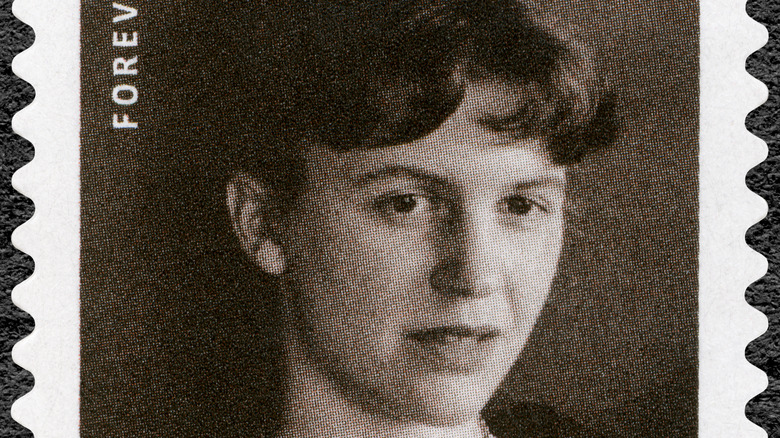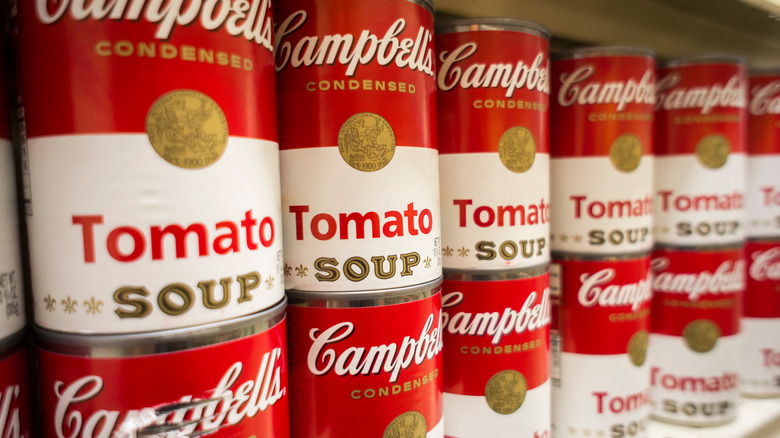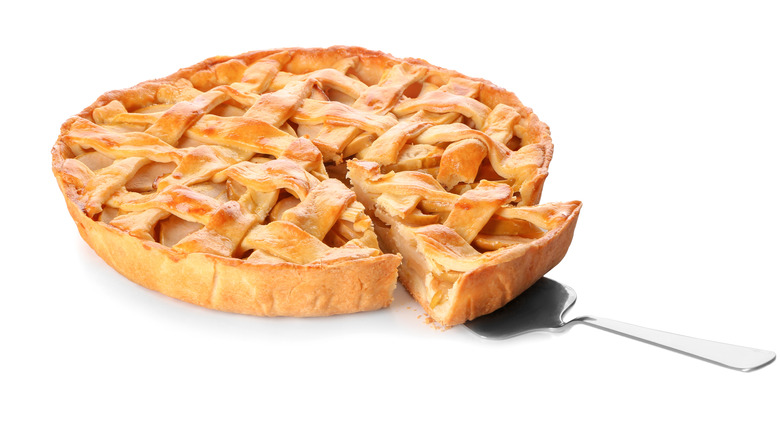The Unusual Cake Sylvia Plath Loved To Eat
Sylvia Plath is nothing short of an icon. The poet and novelist wrote some of the most impactful and transformative work of the past century and is celebrated for her exceptional prose and poetry. Her contributions to literature are myriad, profound, and prized. Did you know, though, that she was also an avid cook and baker?
Many Plath superfans have mused about the origins and flavors of her oft-mentioned tomato soup cake. While the confluence of canned soup and cake is certainly befuddling, the ingredients seem to reflect an almost carrot cake-esque concoction, and it is well established that it was absolutely one of Plath's favorites. A stirring 2003 Guardian piece even mentions that Plath wrote home to ask her mother to seek out the sizing and dimensions of American vs. British soup cans because Plath found that the cake was baking up a bit differently when she lived in the UK.
How is Plath's favorite tomato soup cake made?
Sylvia Plath's tomato soup cake contains flour, baking powder and soda, cloves, cinnamon, nutmeg, raisins, butter, sugar, eggs, and — you guessed it — condensed tomato soup (via The Guardian). There's also a cream cheese frosting that gilds the lily, so to speak. Similar to carrot cake, but also incredibly unique unto itself, the cake has gained many fans over the years. The inherent sweetness that is easily recognized in carrots and carrot cake oddly comes through in this cake, too, perhaps because of the sweetness of the canned tomato soup.
Also, keep in mind that the recipe calls for condensed tomato soup, so the tomato flavor is even more concentrated than you might expect. The baking method is pretty basic, and the cream cheese frosting preparation couldn't be simpler. The cake is reddish-brown before being slathered in the frosting, and the walnuts and raisins add a trademark chew and textural difference in each bite. Delicious!
How did Sylvia Plath find solace in baking?
The Guardian notes that Plath found solace in baking and cooking. She even called a copy of "The Joy of Cooking" a "blessed Rombaeur," and she prized Ladies' Home Journal and the New Yorker. She even spoke of this in her diary. One particular entry reads "I was getting worried about becoming too stodgily practical ... instead of studying Locke, for instance, or writing — I go make an apple pie, or study 'The Joy of Cooking,' reading it like a tare novel." Of course, Sylvia Plath's 1959 essay "Kitchen of the Fig Tree" also spoke to her feelings about each of the varying kitchens she'd lived, cooked, and worked from.
Plath even wrote a short story called "The Day of the Twenty-Four Hour Cakes," in which — in place of the protagonist harming herself or her husband — she focuses on baking one cake, every hour on the hour, for 24 hours. This set, finite schedule creates order and organization that keeps Plath's protagonist occupied. One can assume that this small precise story may give us a glimpse into Plath's mindset in regards to cooking, work, and life as a whole. While the minutiae may be monotonous and middling, the fleeting, quick bright spots can often help to offset that — especially when they result in a delicious dessert. To honor her, curl up with a Plath book and enjoy a slice (or two) of condensed tomato soup cake; there isn't an experience much better than that.


